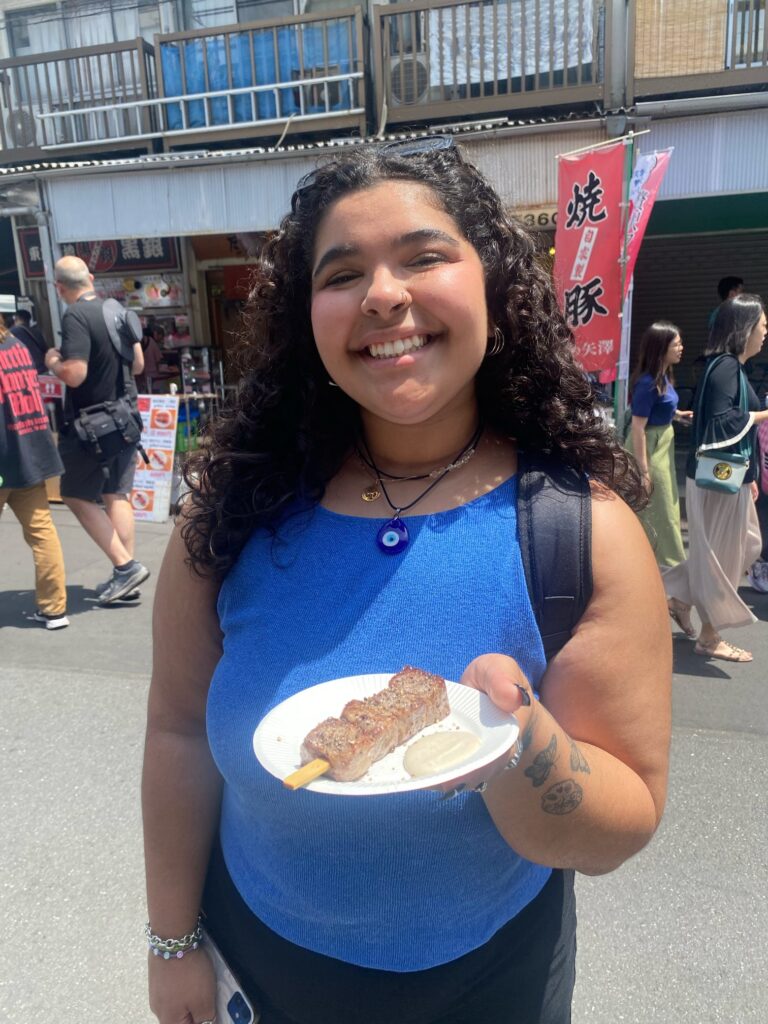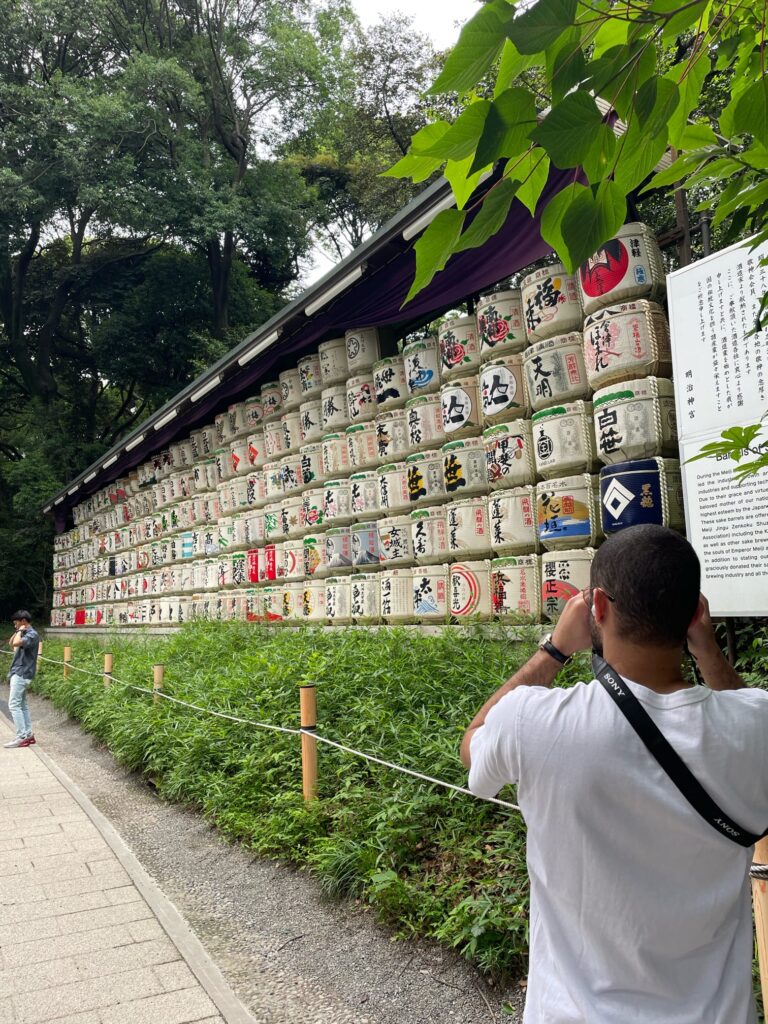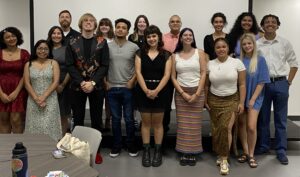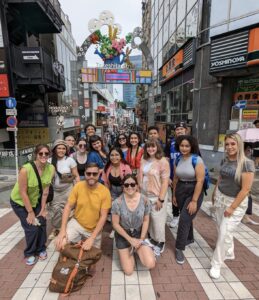
Sake barrels in the Meiji Jingu Shrine.
Our beds have never called our names louder than they do tonight. So much happened during our first full day in Tokyo, from flowers to fashion to food. Despite our aching feet and tired eyes, we had a fun time filled with new experiences and teaching moments.
Our first stop was the Tsukiji Outer Market, where we got to explore the daily Japanese diet. According to our tour guide, Mitsuru (Mark) Sakai, this large outdoor market has the best veggies and fish. A large array of food stands provided plenty of quick bites for us to enjoy. Maya Hicks got a stick of skewered Wagyu beef, and raved about its mouth-melting texture and rich flavor. Maurice Epps seconded her opinion, after asking for a bite.
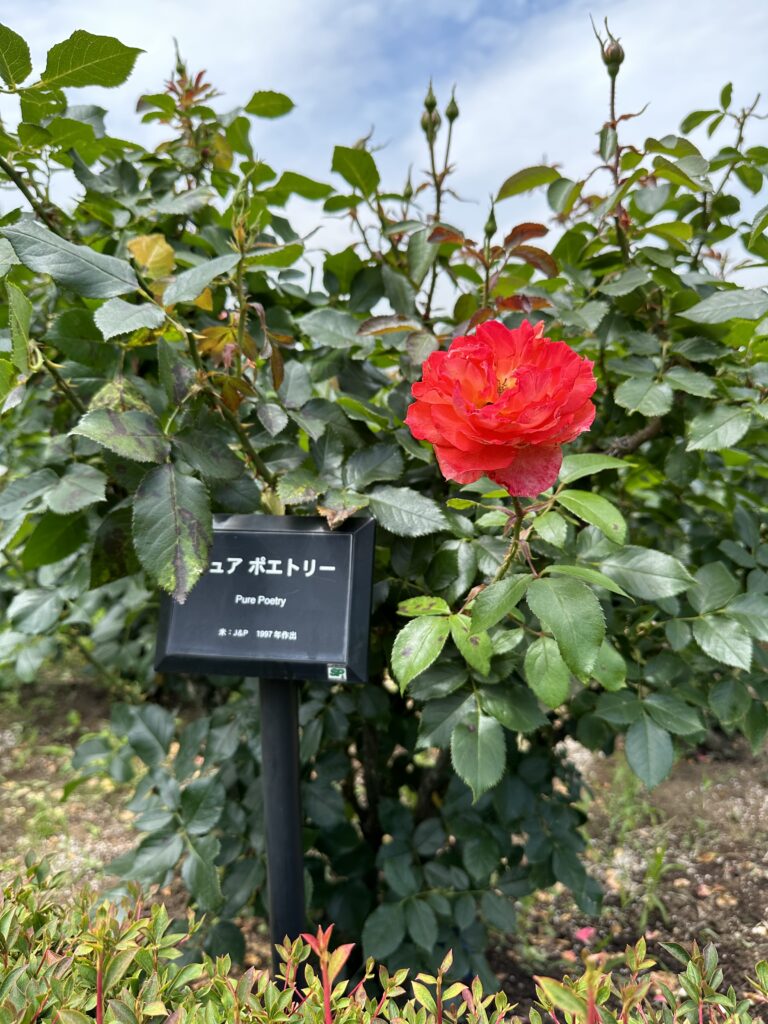
From there, our group headed out to visit the Shinjuku Gyoen National Garden. Inside, the large greenhouse and formal flower beds were the top sights. My personal floral favorites lay in the rose beds. A rose, named Pure Poetry, captured my eye.
Our next stop was Harajuku, the fashion district. Here, we walked through several retail stores, animal cafes, souvenir shops, and cosmetic stores, and grabbed a quick bite to eat for lunch, before visiting Meiji Jingu. As soon as we crossed the torii gates at the shrine, the sacred space filled us with awe and wonder. I got goosebumps on my arms at the very sight of the shrine. There was a lot to learn about Shintoism and its traditional practices.
“The coolest thing I learned today was the difference between Shinto and Buddhism,” Felicity Guajardo said. “I did not know that shrines are only for the Shinto religion because there is no physical god.”
Buddhists have temples, not shrines, such as Tsukiji Hongan-ji, which some students visited after checking out the market.
Oli De Los Santos was fascinated to learn that the Meiji Emperor ushered in an era of modernization, starting in 1868. Post World War II, sake barrels were stacked across from French wine barrels to signify the balance between eastern and western culture in Japan.
Before entering, we each washed our hands and mouth as a way to purify ourselves. Guajardo was amazed by the aura of the Meiji Shrine, saying that praying within its borders made her feel connected to the land and local culture. The sanctuary grounds had three camphor trees wrapped with symbolic ropes, some of which had dangling sheets of paper and straw weaved in.
“The ropes in the shrine represent the storm that helps the harvest,” Epps said, recalling Mark’s explanation. “The rope itself represents the clouds, the paper represents lightning and the straw represents rain.”
After praying to the kami, or the gods, our group visited a booth that sold amulets. Some of these amulets are believed to ward off evil, provide good fortune, or help the recipient find a good partner.
“I knew that [amulets] existed, but I didn’t really know what they stood for,” Reese Ziegler said. “I was surprised to learn each one has a different purpose.”
We collected our tokens of luck, then hopped on a train to Shibuya Station. There, we explored some of the businesses in the Times Square of Tokyo, then made our way across the famous, busy Shibuya crossing for dinner. This was a welcome dinner hosted by the Asia Institute, at Teketeke. We sat in the tatami room and had to remove our shoes before sitting down at a recessed table.
We were then served more than seven courses of authentic Japanese cuisine over an hour. Among them were cabbage salad, potato salad, tofu with fish flake, cucumbers with chili oil, ume ochazuke (a soup with rice and pickled ume fruit, which was extremely salty and sour – and delicious!), a meat skewer, and – the star of the show – a savory ramen.
Over dinner, we reminisced about the day’s events, discussed our personal cultures and how they differed from what we had experienced in Japan so far, and ate enough food to replenish the energy spent on the 20,000-ish steps we took over the course of the day.
We returned to the Toyoko Inn tired but eager to prepare for day two in Tokyo, which holds the promise of visiting a major news publication, an iconic Tokyo landmark, and a professional baseball game.
